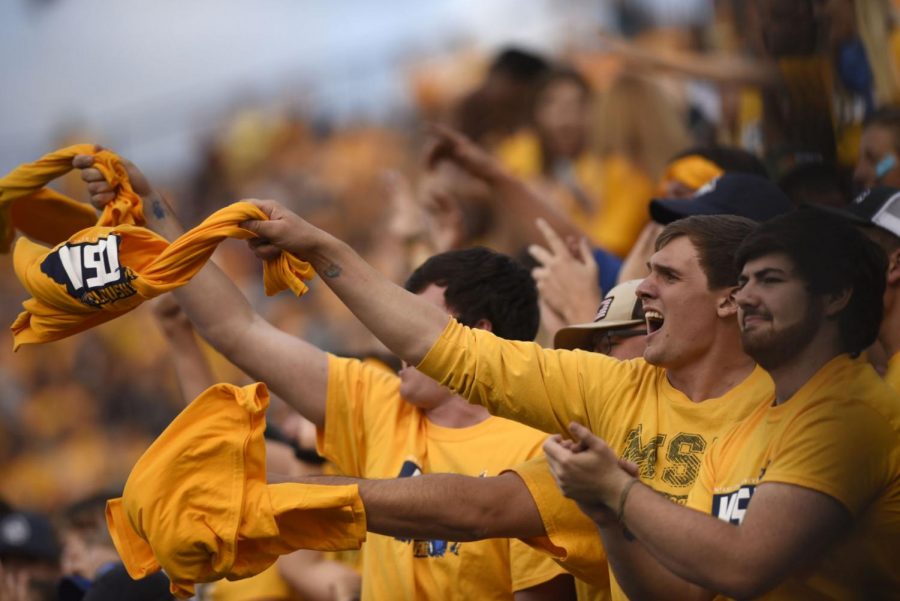Montana State expects full capacity at football games this fall
March 27, 2021
The Montana State athletics department is anticipating a return to relative normalcy regarding its finances and fan attendance at sporting events this fall.
As long as the limit on the size of public events in Gallatin County has been lifted or drastically relaxed by the start of the football season, MSU athletic director Leon Costello expects to be able to offer full capacity for games at Bobcat Stadium.
This past week, he said the availability of the COVID-19 vaccine to all Montanans over the age of 16 — which is planned to begin Thursday — also plays a sizable role in that decision to allow a stadium full of fans.
Costello said fans will have “to make their own decisions personally” regarding whether they receive the vaccine, “but as long as it’s available, I’m planning on full capacity and having Bobcat Stadium be Bobcat Stadium again.”
Costello is fully aware of how difficult the past year has been on fans and athletes alike. He sees a full football stadium as not only a strong possibility but also as a sign of the pandemic’s effects fading from the everyday processes of running an athletic department.
“Nobody’s liked what we’ve had to go through, and I think everybody’s ready to have our fans back,” he said. “Obviously it’s a great home field advantage, it helps us financially, we get back to being somewhat normal. And I think we’re all more than ready to be able to dive into the fall season as if it was normal. We’re all looking forward to that, and we’re all planning for that, as well.”
Starting a new school year with a packed Bobcat Stadium would be a great deviation from how the current school year started and how many financial concerns arose because the stadium stayed empty and a football season was not played.
In late 2020, Costello said the athletic department was facing a $3 million shortfall in revenue compared to the previous year. That deficit is the result of the school honoring the scholarships and other costs associated with supporting athletes of all sports during a year with no revenue.
As a way to address that significant shortage of money, the department launched the Plant The Flag campaign last year, which took fan donations and directed them toward athlete tuition, books and the like. But more help should soon be on the way, Costello said, as long as the NCAA men’s basketball tournament names a champion.
One of the many reasons colleges across the country have been hurting for the past year is because there was no television money generated by March Madness in 2020. Therefore, the NCAA had less money to distribute to its member institutions.
A first-round game between Oregon and VCU was ruled a no contest last weekend because of positive COVID-19 cases in the VCU program. Tournament organizers and ADs like Costello around the country are hoping that’s the only game that ends up getting canceled.
“Being able to finish the tournament will go a long way in all of the institutions across the country being able to receive as close to their expected distribution from the NCAA as possible,” Costello said. “We’re all relying on that, especially us here in the Big Sky Conference. Those funds will go a long way to helping us out in a really, really bad year.”
Costello said the school’s usual payout from the NCAA is between $600,000 and $750,000 per year. This year’s allotment will go directly toward addressing that deficit.
Montana State elected to not participate in the Big Sky’s spring football season, in part, because with no fans attending per local health guidelines, the school would not recoup any of the expenses of putting on even an abbreviated season.
“The financial impact would have been worse, for sure,” Costello said.
He added that without an indoor football facility and the uncertainty regarding Bozeman weather in late winter and early spring, there didn’t appear to be a feasible way to properly prepare the team for a non-fall season.
But the prospect of a traditional football season, with fans and regular sponsorship partners, gives Costello hope for a much healthier financial outlook for the next year.
He said the athletics department as a whole cut down its operating budget by 50% this year compared to the one before it. That’s partially due to recruiting and travel limitations, Costello said. It also is the product of athletics personnel figuring out how to do their jobs effectively with fewer resources.
Although the circumstances were far from rosy, Costello said the past year has been a learning experience for how to better raise and spend money, which will be beneficial down the road.
That said, he also recognizes that as the pandemic hopefully fades and life in the athletics department returns to what everybody knows to be normal, the school is certain to see something of a correction of its revenue and spending habits.
“We also know that once we get through this, we’re going to have to get back on a normal schedule,” he said. “And we think we’re going to be able to do that with fans being able to come back here starting this fall. We think we’re going to be on a normal revenue generating year, which means we’ll be at more of a normal expense-spending year, as well.”
Bobcats first-year head football coach Brent Vigen shares his AD’s excitement and optimism for a traditional game day atmosphere by the time he takes the sidelines for his debut.
“I certainly hope for our football program, our university, for everyone who loves Bobcat football,” Vigen said, “we can take the steps necessary that come September things can be as normal as we want them to be.”













